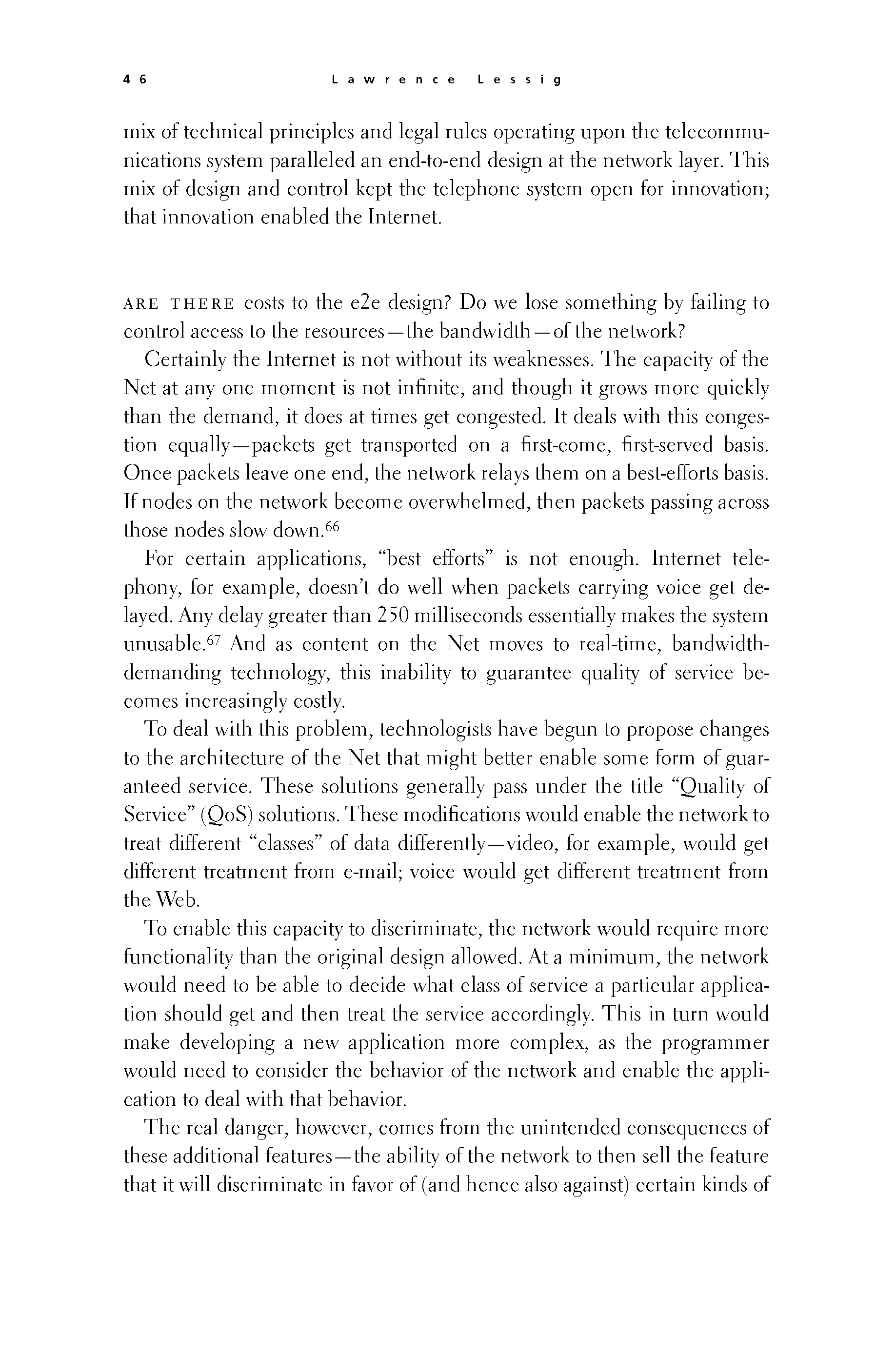 p045 _
-chap- _
toc-1 _
p046w _
toc-2 _
+chap+ _
p047
p045 _
-chap- _
toc-1 _
p046w _
toc-2 _
+chap+ _
p047
mix of technical principles and legal rules operating upon the telecommu-
nications system paralleled an end-to-end design at the network layer. This
mix of design and control kept the telephone system open for innovation;
that innovation enabled the Internet.
///\\\
Are there costs to the e2e design? Do we lose something by failing to
control access to the resources -- the bandwidth -- of the network?
Certainly the Internet is not without its weaknesses. The capacity of the
Net at any one moment is not infinite, and though it grows more quickly
than the demand, it does at times get congested. It deals with this conges-
tion equally -- packets get transported on a first-come, first-served basis.
Once packets leave one end, the network relays them on a best-efforts basis.
If nodes on the network become overwhelmed, then packets passing across
those nodes slow down.[3-66]
For certain applications, "best efforts" is not enough. Internet tele-
phony, for example, doesn't do well when packets carrying voice get de-
layed. Any delay greater than 250 milliseconds essentially makes the system
unusable.[3-67] And as content on the Net moves to real-time, bandwidth-
demanding technology, this inability to guarantee quality of service be-
comes increasingly costly.
To deal with this problem, technologists have begun to propose changes
to the architecture of the Net that might better enable some form of guar-
anteed service. These solutions generally pass under the title "Quality of
Service" (QoS) solutions. These modifications would enable the network to
treat different "classes" of data differently -- video, for example, would get
different treatment from e-mail; voice would get different treatment from
the Web.
To enable this capacity to discriminate, the network would require more
functionality than the original design allowed. At a minimum, the network
would need to be able to decide what class of service a particular applica-
tion should get and then treat the service accordingly. This in turn would
make developing a new application more complex, as the programmer
would need to consider the behavior of the network and enable the appli-
cation to deal with that behavior.
The real danger, however, comes from the unintended consequences of
these additional features -- the ability of the network to then sell the feature
that it will discriminate in favor of (and hence also against) certain kinds of
[[46]]
p045 _
-chap- _
toc-1 _
p046w _
toc-2 _
+chap+ _
p047